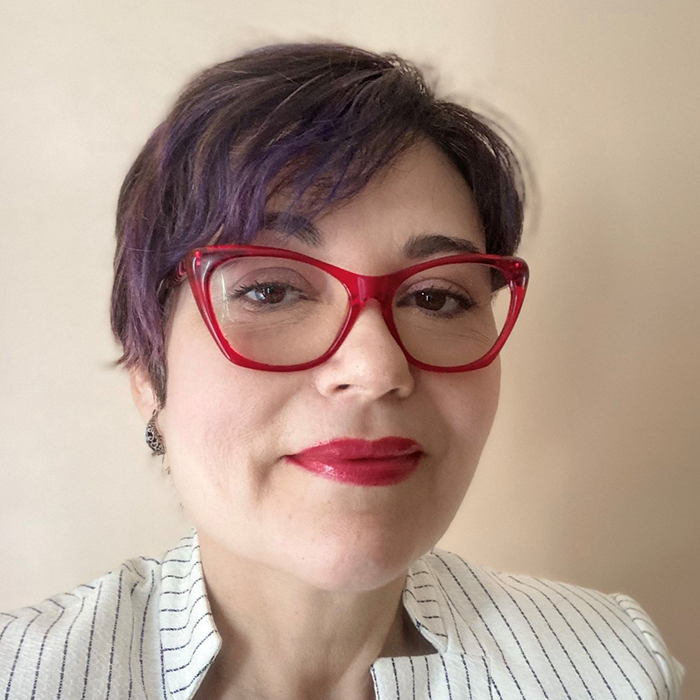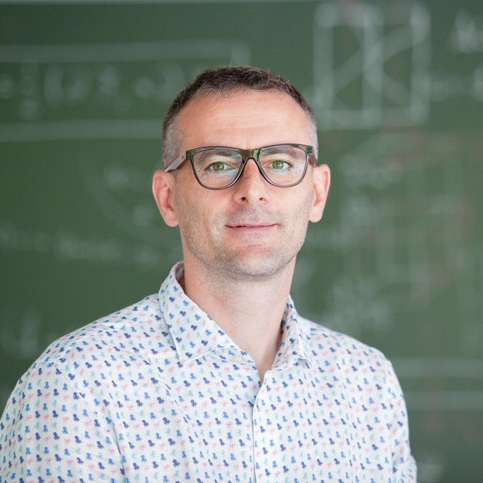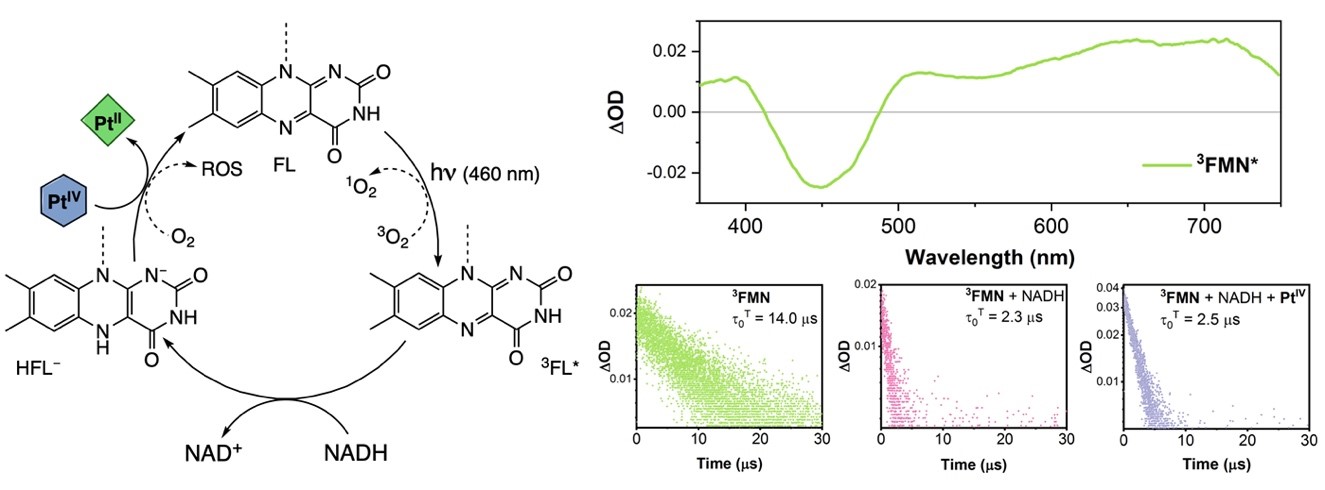International Workshop on Medicinal Bioinorganic Chemistry
-

Invited speakers:
Prof. Maria Contel, Brooklyn College (The City University of New York)

Prof. Maria Contel, Brooklyn College (The City University of New York)
Title: Ruthenium- and gold-based compounds as potential chemo- and targeted-therapeutics for breast cancer
Abstract:
Metal-based chemotherapeutics such as platinum-based drugs in combination or monotherapy regimes are used to treat a large number of cancers. However, their efficacy is still hindered by clinical problems, including acquired or intrinsic resistance, a limited spectrum of activity, and high toxicity leading to significant side effects. A number of unconventional metal-based compounds highly effective in cancers resistant to cisplatin and other chemotherapeutics, have been described over the past decade (including recent successful clinical trials). In this context, our laboratory is exploring some of these metallodrugs as potential treatments for different types of breast cancer (still the most deadly type of cancer for women). Two types of breast cancers have a direr prognosis and are especially difficult to treat: triple negative and HER-2 positive breast cancers. We will present our latest work on Ruthenium(II) compounds containing p-cymene and iminophosphorane ligands which have been extremely efficacious in triple negative breast cancer (both in vitro and in vivo). We will also report on strategies to target HER-2+ breast cancers by using antibody drug conjugates containing Trastuzumab and gold(I) cytotoxic species, as well as on immunoliposomal formulations.
Biography:
Maria Contel graduated from the University of Zaragoza in 1993 and completed her PhD at the Public University of Navarra in 1996. After postdoctoral stays at the Australian National University with Prof. Martin A. Bennett, and at Utrecht University with Prof. Gerard van Koten, she returned to Spain in 2000 (Universidad de Zaragoza-CSIC) as senior researcher and as Ramon y Cajal Fellow in 2002. In 2006, she joined Brooklyn College (The City University of New York, CUNY) becoming a Full Professor in 2016. She is a faculty member at the CUNY Graduate Center, and a full member at the University of Hawaii Cancer Center. She is the founder and Director of the Brooklyn College Cancer Center. Her current research focuses on the synthesis of inorganic compounds with medicinal applications, the study of the biological activity and modes of action of these agents, and the development of targeted therapies through the use of nanotechnology.
Prof. Luca Salassa, Donostia International Physics Center / Euskal Herriko Unibertsitatea UPV/EHU / Ikerbasque, Basque Foundation for Science

Prof. Luca Salassa, Donostia International Physics Center / Euskal Herriko Unibertsitatea UPV/EHU / Ikerbasque, Basque Foundation for Science
Title: Catalysis Towards Metal Substrates: A New Strategy for The Activation Of Anticancer Metallodrugs
Abstract:
In catalysis, coordination and organometallic compounds typically operate as catalysts for the transformation of organic compounds into added value chemicals. Conversely, catalytic reactions in which metal complexes act as substrates are practically unknown. My group recently discovered that flavins photocatalyze the conversion of Pt(IV) precursors into Pt(II) anticancer drugs in the presence of electron donors.1-3 These reactions have bioorthogonal selectivity, occurring in biological environments with high efficiency. In this contribution, I will describe how this unconventional chemistry can be exploited to devise innovative strategies for photochemotherapy,4 including by designing flavin-based biomaterials for drug photodelivery.5

References
1. Alonso-de Castro, S.; Ruggiero, E.; Ruiz-de-Angulo, A.; Rezabal, E.; Mareque-Rivas, J. C.; Lopez, X.; López-Gallego, F.; Salassa, L. Chem. Sci. 2017, 8, 4619–4625.
2. Alonso-de Castro, S.; Cortajarena, A. L.; López-Gallego, F.; Salassa, L. Angew. Chem. Int. Ed. 2018, 57, 3143–3147.
3. Gurruchaga-Pereda, J.; Martínez-Martínez, V.; Rezabal, E.; Lopez, X.; Garino, C.; Mancin, F.; Cortajarena, A. L.; Salassa, L. ACS Catal. 2020, 10, 187–196.
4. Alonso-de Castro, S.; Terenzi, A.; Hager, S.; Englinger, B.; Faraone, A.; Calvo Martínez, J.; Galanski, M.; Keppler, B. K.; Berger, W.; Salassa, L. Sci. Rep. 2018, 8, 17198.
5. Mazzei, L.F.; Martínez, A.; Trevisan, L.; Rosa-Gastaldo, D.; Cortajarena, A. L.; Mancin, F.; Salassa, L. Chem. Commun. 2020, 56, 10461-10464.
Biography:
Luca Salassa obtained his Ph.D. at the University of Turin (Italy) in 2004. Later, he worked as postdoc at the University of Montana (USA) and at the University of Warwick (UK, MSCA fellow). In 2012, he was awarded a Ramón y Cajal fellowship to join CIC biomaGUNE (San Sebastián, Spain) and start his independent career. Since 2017, Luca Salassa is Ikerbasque Professor at the Donostia International Physics Center (San Sebastián, Spain) where his group develops new photochemistry strategies for the activation of biologically relevant metal complexes.
Prof. Tarita Biver - University of Pisa

Prof. Tarita Biver - University of Pisa
Title: On the different mechanistic features of the binding of metal complexes to biosubstrates: the spectroscopic contribution
Abstract
The mechanistic analysis of the binding of a target molecule (often a metal complex to be tested as a drug) to a biosubstrate can be done using absorbance and fluorescence titrations, coupled to other techniques or to other spectroscopic tests such as melting experiments. Titrations are basic approaches which may wrongly appear old-fashioned with respect to complicated techniques. However, this is not the case. They are very powerful and useful tools, which might hold bad surprises besides their apparent simplicity. This presentation will, on one side, discuss some recent findings on the different binding modes driven by different metal centers (Au(I)/Ag(I), Pd(II)/Pt(II)/Au(III)) and ligands (series of Ru(II)-arene-a-diimmine) towards biosubstrates, with a particular focus RNA polynucleotides and oligo-four-way junctions. On the other side, it will highlight some tricky aspects of the spectroscopic analysis of these complex systems.
Biography
Tarita Biver completed (2005) a PhD in Chemical Sciences at the University of Pisa (UNIPI - Italy) entitled “Kinetic and thermodynamic studies on the interaction between intercalating dyes and nucleic acids”. Since then, she has been working in the study of equilibria and reaction mechanisms of complex systems. Primarily spectrophotometric and fluorimetric techniques are used to unveil the details of the interaction of small molecules with biosubstrates ranging from nucleic acids to oligo sequences and proteins. The research is also open to bio/environmental studies based on micelles/liposomes and the characterization of chromophores for photovoltaics. Tarita Biver was Assistant Professor at UNIPI 2006-2020 and is currently Associate Professor.
Dr. Fernando Herranz - Instituto de Quimica Médica /CSIC

Dr. Fernando Herranz - Instituto de Quimica Médica /CSIC
Title: Nanoparticles for positive contrast MRI and PET: shedding light on the iron oxides.
Abstract
Iron oxide nanoparticles (IONP) are the eternal promise to change the molecular imaging field. This promise has not become a reality due to the unfavourable imaging features of traditional iron oxide nanoparticles for many diseases, i.e. the negative contrast in magnetic resonance imaging (MRI). In the last years our group has focused on making IONP really useful for molecular imaging. For that, we developed extremely small 68Ga core-doped iron oxide nanotracers. These nanotracers provide simultaneous positive contrast in MRI and PET signal allowing for an unambiguous diagnosis of several diseases in animal models. Today I’ll show our latest results in the use of these nanotracers, particularly for the diagnosis of vascular diseases and how the combined use of these nanotracers with bioorthogonal chemistry may change the way molecular imaging is carried out.
Biography
Fernando Herranz got his chemistry degree in 2000 at Univ. Complutense de Madrid and his PhD in Bioorganic chemistry at UNED in 2006 under Jose Elguero and Rosa Claramunt supervision. He started working on Nanomedicine for imaging early in 2007 when he joined prof. Jesús Ruiz-Cabello’s group at UCM and performed a two-years stay at Imperial College London in prof. Ramón Vilar’s group. Back in Spain he continued this work in Ruiz-Cabello’s lab, in 2011 the group moved to the Spanish cardiovascular research centre - CNIC where Fernando started his research line in the diagnosis of cardiovascular diseases combining Nanomedicine and molecular imaging. In 2018 he got a tenure position at Instituto de Quimica Médica in CSIC and in 2020 he got a Cientifico Titular position at the same centre. His research is focused on two main areas: the use of Nanomedicine for the early diagnosis and characterisation of cardiovascular and neurovascular diseases and, more recently, the use of Nanomedicine against drug resistant bacteria in lung infections.
-
Download the scientific programme

Programme
10.00-10.30 María Contel (City University of New York) Ruthenium- and gold-based compounds as potential chemo- and targeted-therapeutics for breast cancer
10.30-11.00 Luca Salassa (Donostia International Physics Center) Catalysis Towards Metal Substrates: A New Strategy for The Activation Of Anticancer Metallodrugs
-- 11.00 Break (15 min)
11.15-11.45 Tarita Biver (University of Pisa) On the different mechanistic features of the binding of metal complexes to biosubstrates: the spectroscopic contribution
11.45-12.15 Fernando Herranz (Instituto de Quimica Médica - CSIC) Nanoparticles for positive contrast MRI and PET: shedding light on the iron oxides
-
The registration is free of cost, but mandatory to all attendees. To register, please fill in the following form with your contact details.
Due to occupancy restrictions, only few in-person places are available and will be assigned in the first-come-first-served basis.
-
The workshop will be held at the Conference Room of IMDEA Nanociencia.
Postal address: C/ Faraday, 9
Campus de Cantoblanco
28049 Madrid
SpainContact the Organizer by email at: ana.pizarro [at] imdea.org
How to arrive
From Madrid (city centre)
- By train (Cercanías)
- Line C4 (Alcobendas-San Sebastián de Los Reyes/Colmenar Viejo), stop at “Cantoblanco Universidad” + 15 min. walk.
- By bus
- Only from “Plaza de Castilla” bus station. Line 714, stop at “Newton-Fco. Tomás y Valiente” + 3 min. walk.
“Plaza de Castilla” is connected to metro lines 1, 9 and 10.From the airport Adolfo-Suárez/Barajas
- By train (Cercanías)
- Line C1 till “Chamartin” station and change to line C4 (Alcobendas-San Sebastián de Los Reyes/Colmenar Viejo), stop at “Cantoblanco Universidad” + 15 min. walk.
- By bus
- Only from Terminal 4. Line 827, stop at “Newton-Fco. Tomás y Valiente” + 3 min. walk.
By taxi
- Taxi call centre: +34 91 547 8200, +34 91 371 2131.
- From the airport a flat fare of 30€ applies.




